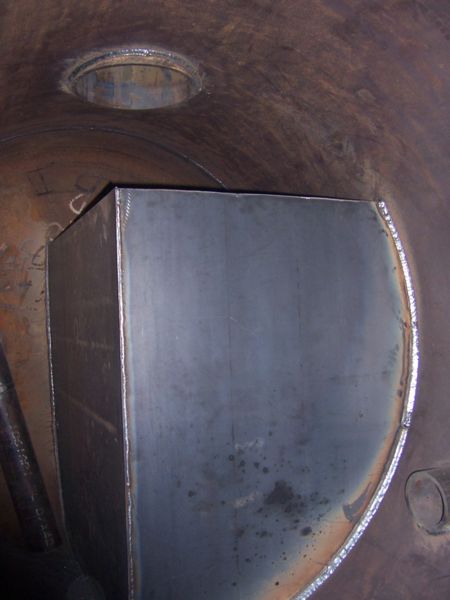Weir
 Weir is a component or structure inside a pressure vessel that is designed to control the flow of fluids or separate phases within the vessel. A weir is typically a barrier or obstruction placed inside the pressure vessel. Pressure vessels are containers used to hold and store gases or liquids at high pressures and temperatures. They are commonly used in various industries, including chemical processing, oil and gas, petrochemical, and power generation.
Weir is a component or structure inside a pressure vessel that is designed to control the flow of fluids or separate phases within the vessel. A weir is typically a barrier or obstruction placed inside the pressure vessel. Pressure vessels are containers used to hold and store gases or liquids at high pressures and temperatures. They are commonly used in various industries, including chemical processing, oil and gas, petrochemical, and power generation.
In liquid-liquid separation, the lighter of two liquids might have an overflow weir. Using residence time, chemicals or heat, two immiscible liquids are allowed to separate. The weir can extend across the vessel and allow for a significant volume to fill with oil. During the design of the weir box below, the water cut was very high compared to the amount of oil that we expected to flow through the system. Because of this, the weir box was designed to be smaller and not take up valuable real estate inside the pressure vessel. This particular AWT vessel controlled the oil liquid level first based on flow rate over the weir. If there was a surge of oil and the weir box had a high liquid level, the control valve opened up to empty the box.
The design of a pressure vessel internal weir will depend on the specific requirements of the process and the characteristics of the fluids being processed. Weirs can come in various shapes and configurations, including simple baffles, v-notch weirs, and more complex structures, depending on the desired functionality.
Reasons for Weirs
Phase Separation - Weirs are often used to separate different phases of a fluid, such as separating liquid from gas or separating immiscible liquids with different densities. They help in achieving better phase separation within the vessel.Flow Control - Weirs can control the flow rate of fluids inside the vessel. By adjusting the height or design of the weir, engineers can regulate the flow of liquids or gases within the pressure vessel
Liquid Level Control - Weirs can be used to maintain a specific liquid level inside the vessel. This is important in processes where maintaining a certain level of liquid is critical for efficiency or safety.
Mixing - In some cases, weirs can be used to promote mixing of fluids within the pressure vessel. By altering the design of the weir, engineers can induce turbulence and mixing as needed.
It's essential to design and install pressure vessel internals like weirs carefully to ensure the safe and efficient operation of the vessel and to meet the process requirements. Additionally, these components should be in compliance with relevant industry standards and codes to ensure the integrity and safety of the pressure vessel.

